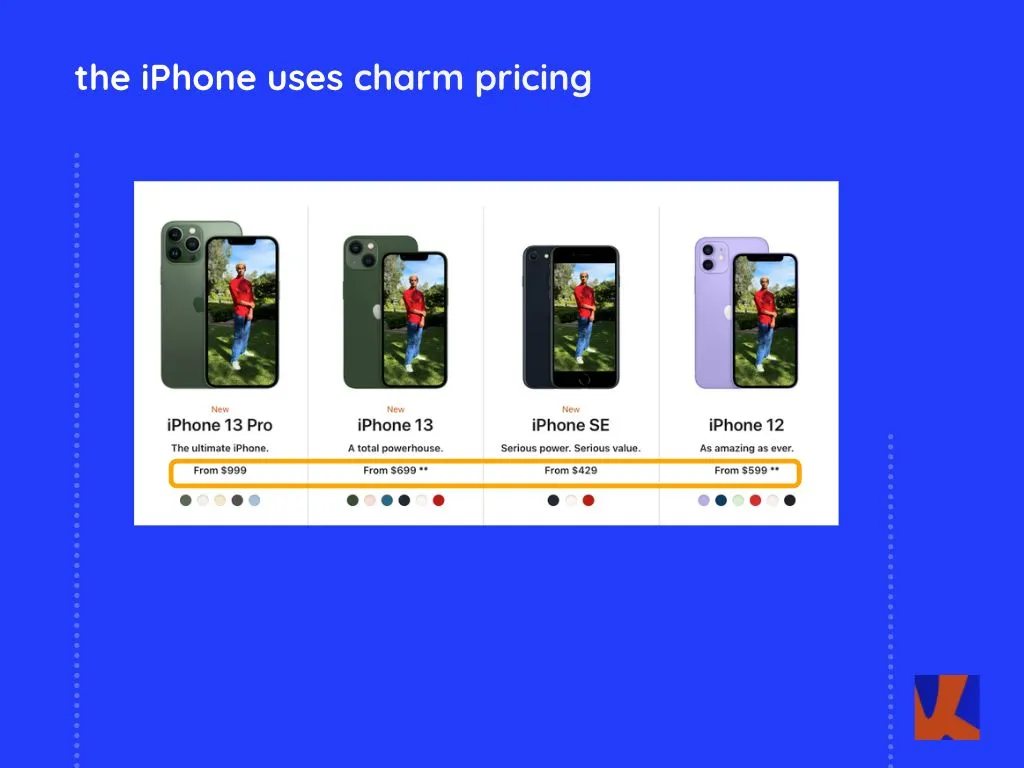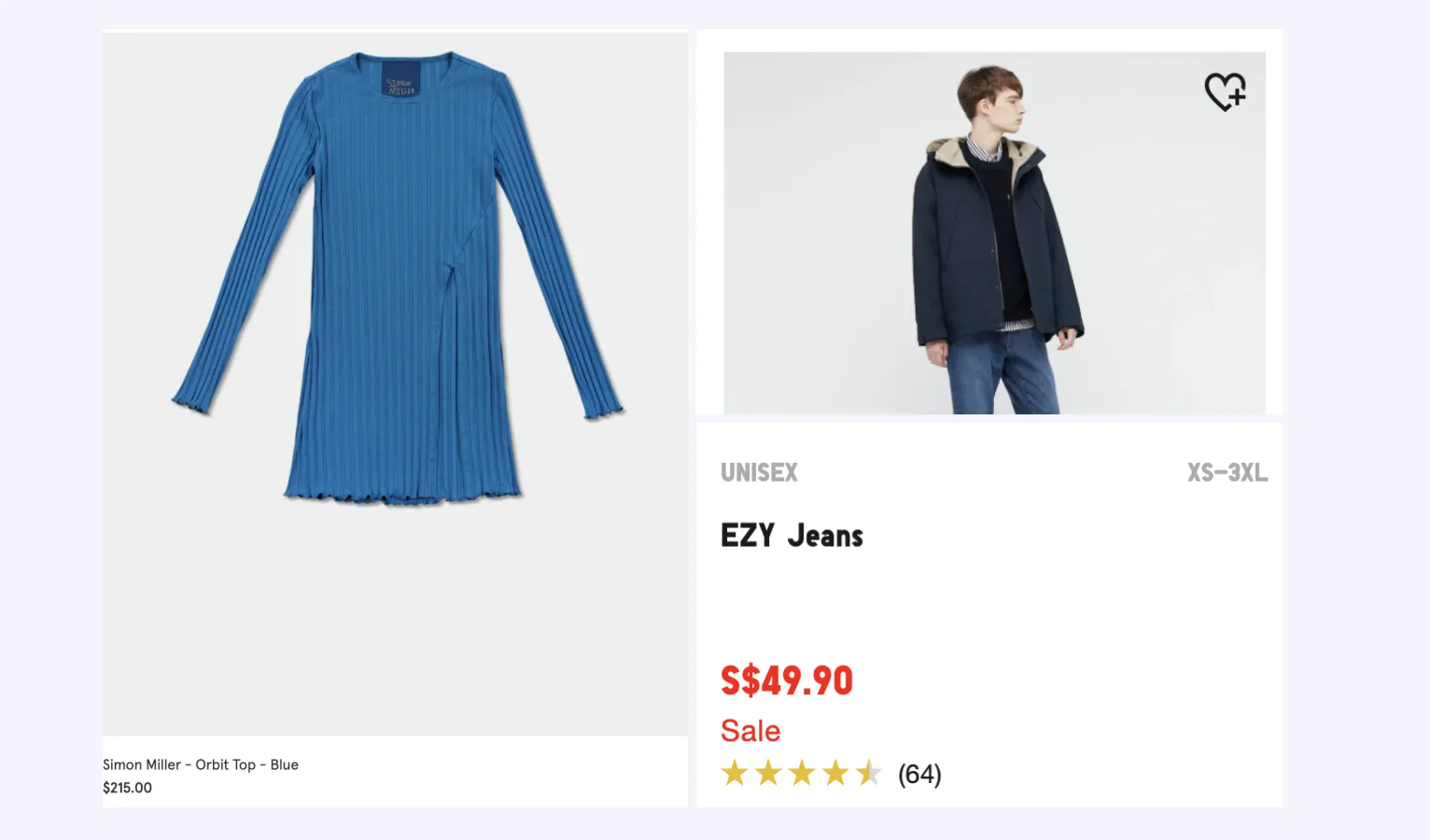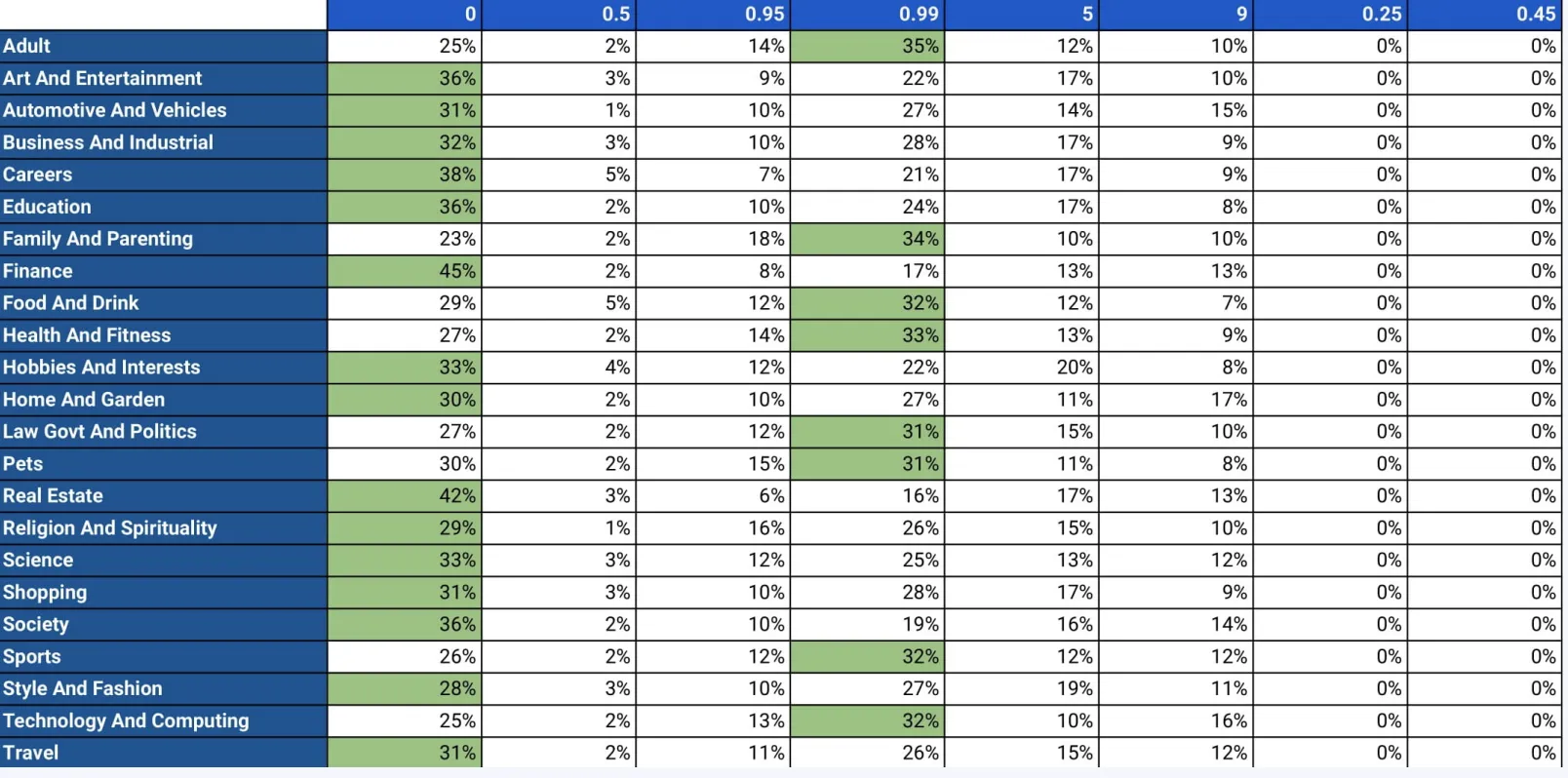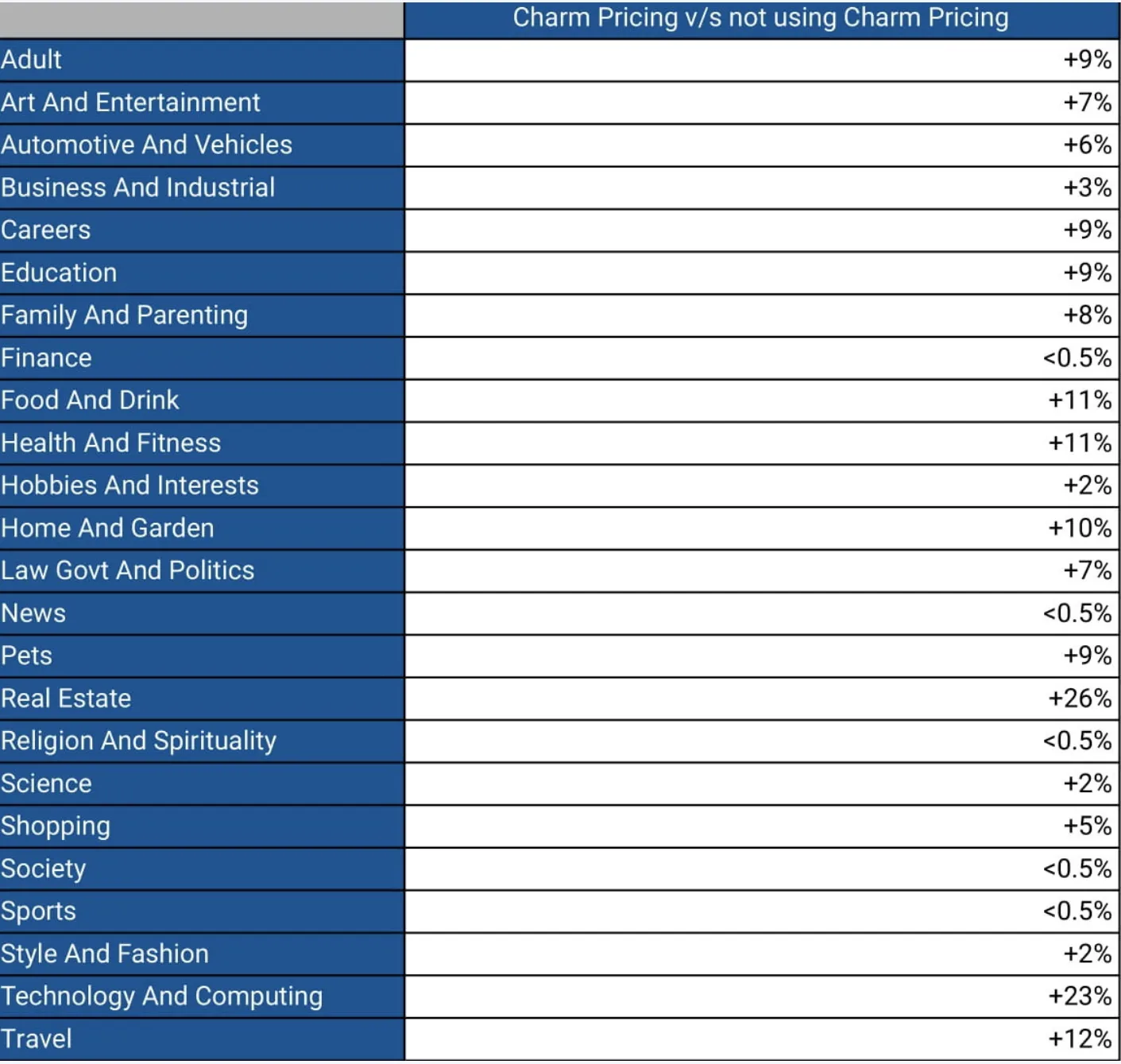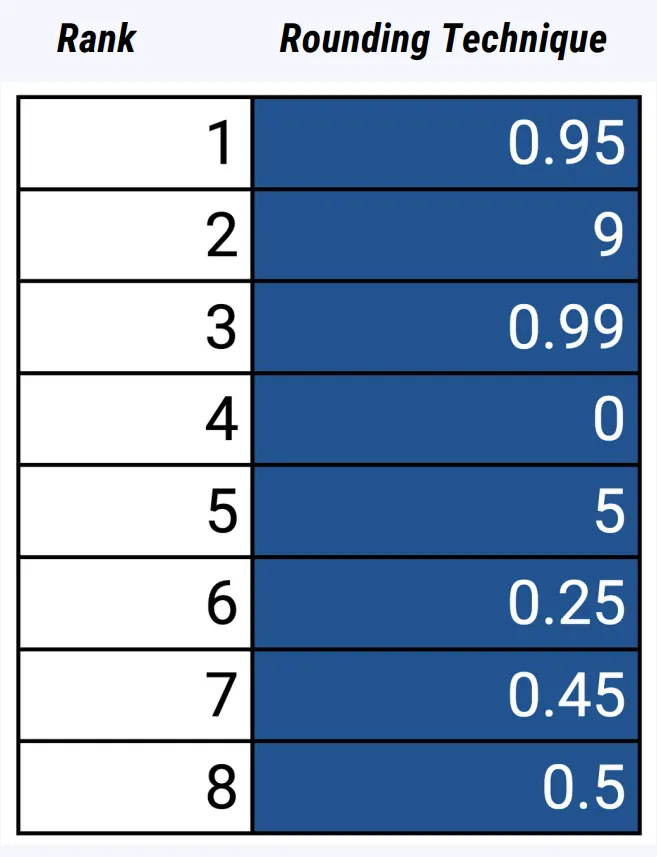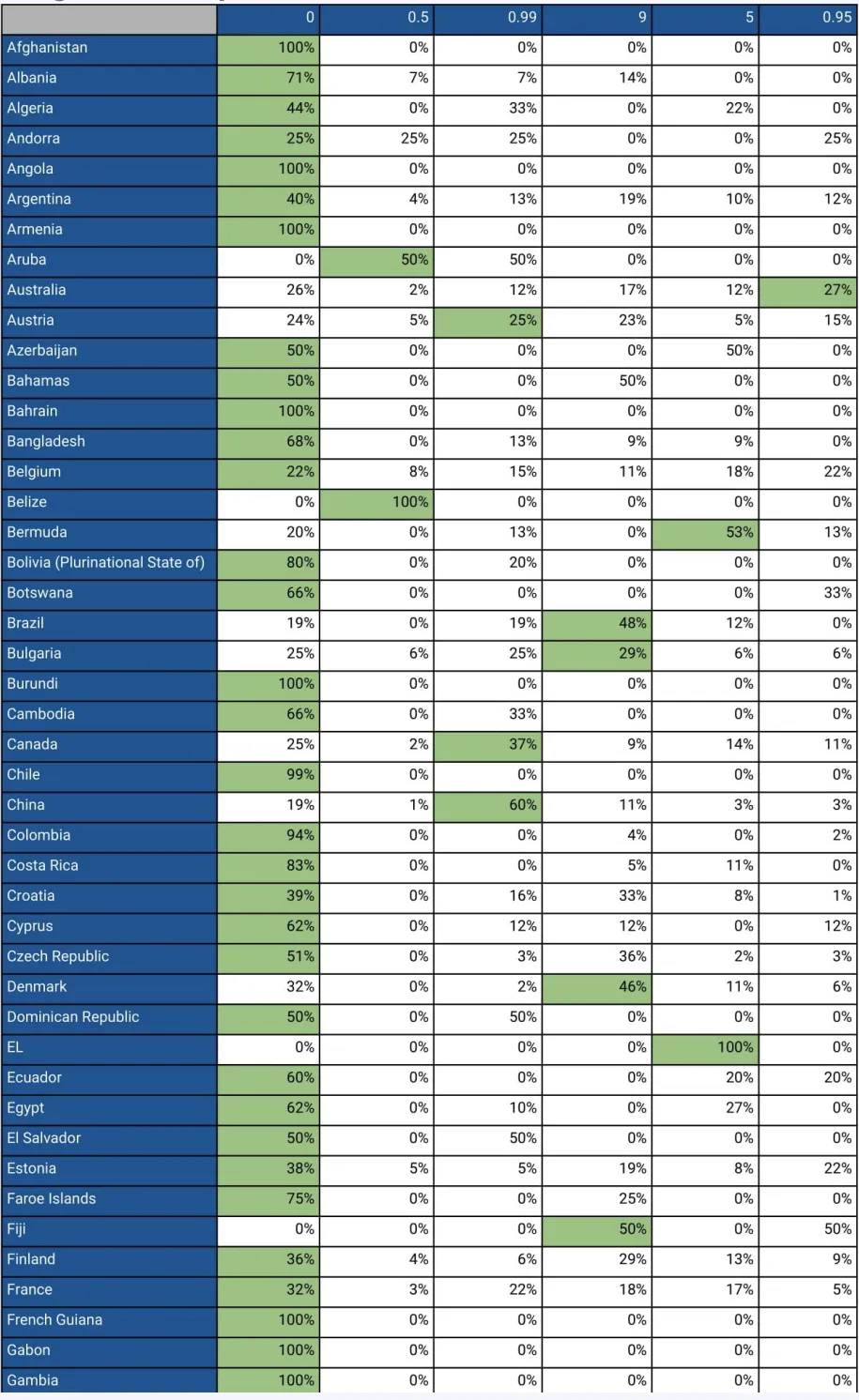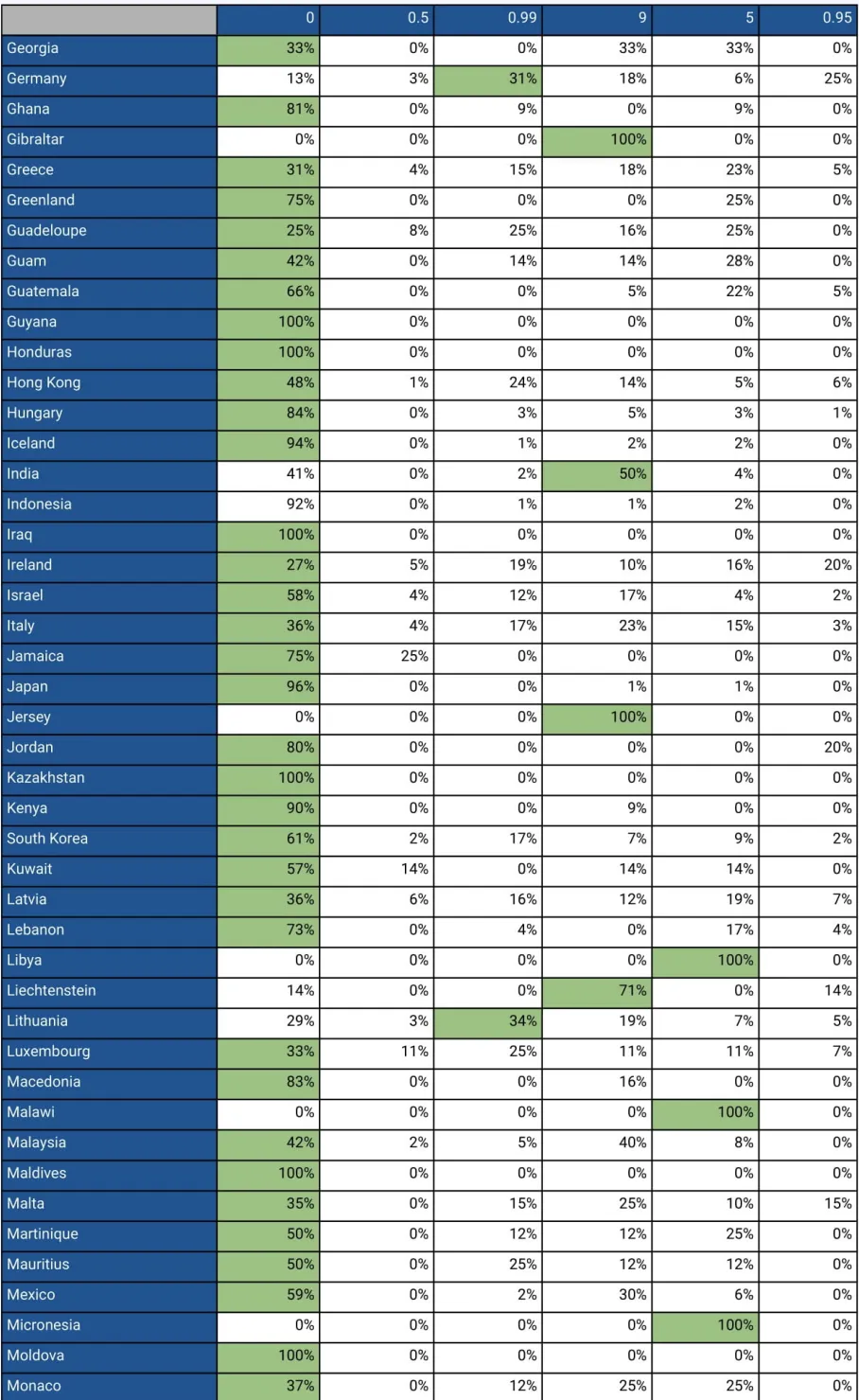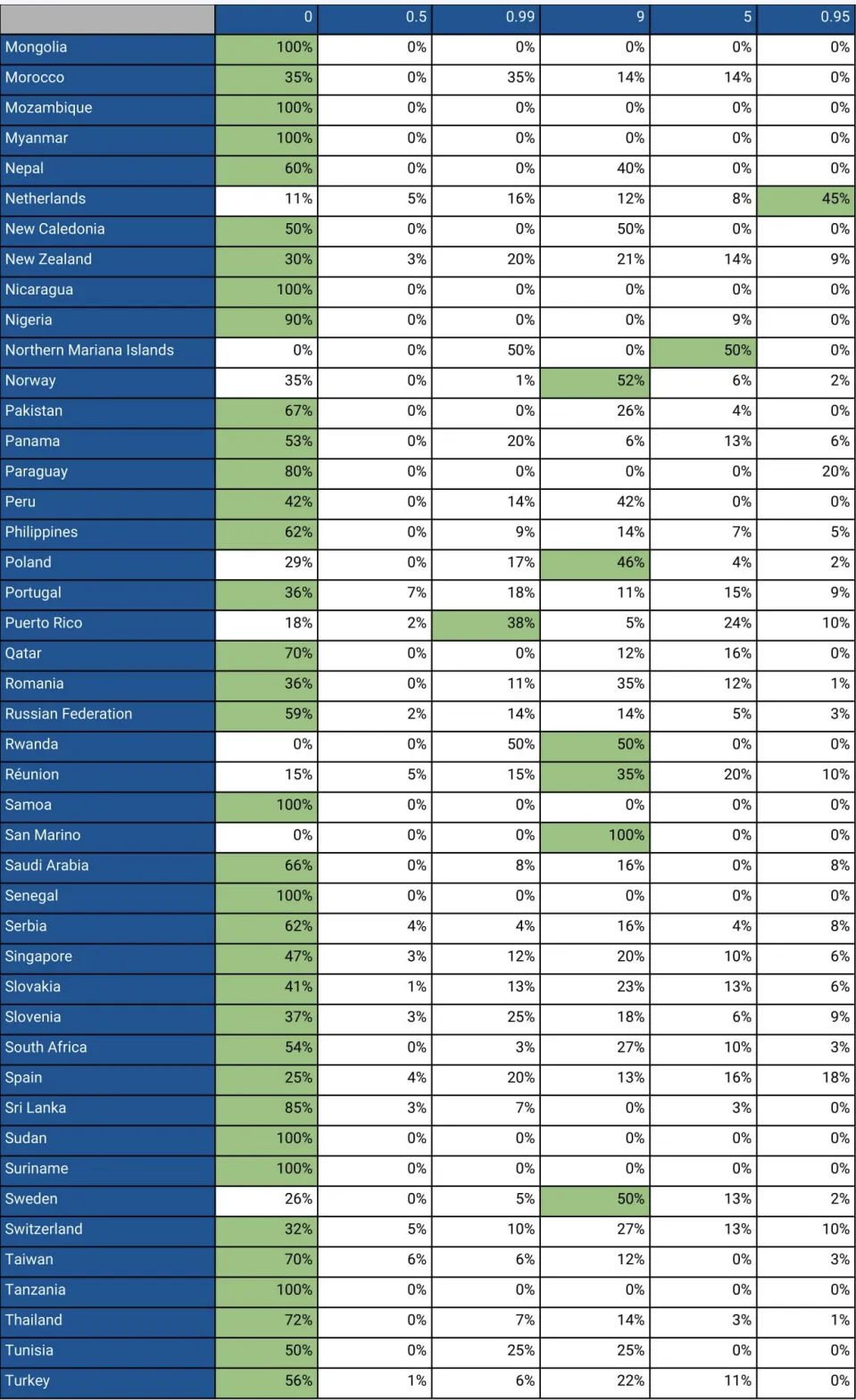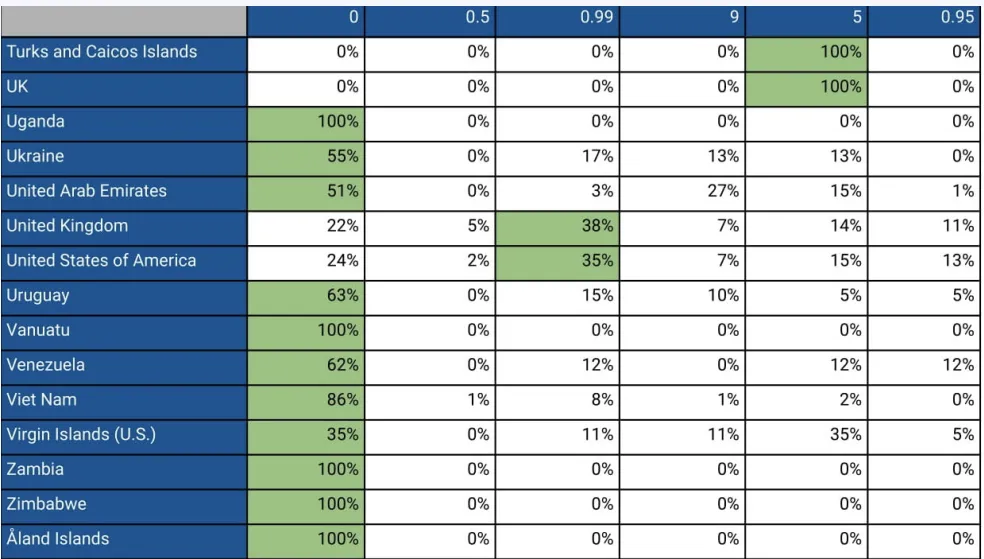March 30, 2022
Charm Pricing
At Konigle, we get asked a lot, Does Charm Pricing Work? To answer this question, we conducted a study that analysed over 1.5 million stores across April of 2022. The stores spanned over 150 countries and 23 categories.
What is Charm Pricing ?
Charm pricing is also known as psychological pricing. Research has shown consumers' perceptions and evaluations are disproportionately influenced by the left-most digit of the product price. The left-digit effect and the magnitude of price have proven to have a positive impact on purchase decisions for a very long time. This type of pricing is often used in retail settings as well as in online sales.
What is an example of charm pricing?
Studies have shown that consumers perceive just-below prices as being lower than they actually are. For the iPhone above, Apple prices it at $999, and most shoppers psychologically round the price down to $900 rather than rounding up to $1000. Perceiving the iPhone to be almost 100 dollars cheaper!
Hence, these just-below prices (like.99,.95,.97) are believed to drive greater demand and work almost like a charm on buyers, swaying consumer decision-making. Hence the name Charm Pricing.
Does charm pricing work?
Over 76% of stores that use Konigle use the Charm Pricing technique. We analyzed over 1.5 million online stores and found stores using some form of charm pricing technique end up making 4% higher revenue than those without.
Yes, there could be multiple reasons for these stores doing better, but we find improved conversions and better brand recall as two major outcomes of using charm pricing techniques.
1.5 million online stores
We analysed randomly selected 1.5 million online stores across the globe to see if they were using a rounding technique for their prices. The different rounding techniques for which the stores were analysed were: 00, 95, 97, 99, 25, 45
The stores were considered to be using the Charm pricing technique if 90% of products were using one of the above-mentioned rounding techniques. Approximately 44% of 1.5 million stores were found to be using one of the above rounding techniques. It was also observed that over 83% of the stores had only 25% of their products rounded using one of the above techniques.
Stores meeting the 90% threshold were defined as tactics-aware stores. While those not were called tactic unaware stores for this analysis. Tactic aware stores were found to have 4% higher revenue on average than tactic unaware stores.
Charm pricing for your store category
Ok, charm pricing works, but does it work equally for each store category? We get this question a lot too. Here's what we found in our analysis.
We see various rounding methods being used by stores in each category. Here's a detailed breakdown on how stores in different categories are using various rounding techniques.
Here's what we found in terms of revenue performance of stores by store category. Across all categories, we observed a positive impact of charm pricing.
Ranking Rounding Techniques by Impact
We also compared stores with at least 25k USD in monthly revenue and are using various rounding techniques to see which rounding technique statistically performs better.
Charm pricing for your store country
Here's what we found on how stores in different countries are using various rounding techniques.
Implementation Challenges
Interacting with hundred's of online stores and analysing over 1.5 million stores, we found that over 83% of stores have just 25% of products charm priced. Talking to hundreds of store operators, we found the following challenges stores face in implementing charm pricing consistently.
Time consuming
Manually repricing hundred's of thousand's of products and rounding them is time consuming and highly cumbersome.
Error prone
Rounding prices manually is mathematical gymnastics for most people and is very error prone. Who wants to think about how to round $16.92 while repricing thousands of products?
Promotions pricing
Even if a store spends hours rounding off products to implement charm pricing as soon as we want to run a promotion and our prices change, the prices go haywire and aren't charm priced anymore.
Is it worth the hassle?
After analysing over 1.5 million stores, we can safely say that having products charm priced does have a positive impact on revenue. We believe having prices well round off is worth it.
Yes, there could be multiple reasons for these stores doing better, but we find improved conversions and better brand recall as two major outcomes of using charm pricing techniques, all of which lead to improved margins.
But surely it need not be cumbersome and a big hassle to maintain rounding techniques on an online store. To make it ridiculously easy to use the charm pricing technique, you can find the charm pricing seller tool inside Konigle that can help you implement the rounding technique of your choice in under 3 minutes.
Charm Pricing using Konigle
Here's a no-brainer guide to implementing charm pricing on your store in under 3 minutes.
- Connect your online store with Konigle.
- Search for 'charm pricing' in the search bar.
- Enable the charm pricing seller tool.
- Choose your rounding technique.
- Keep an eye on conversion rate and other useful metrics.
- Exclude products, exclude active reprice events, & use the bulk price editor for custom needs.
This video explains what charm pricing is and how you can implement the charm pricing strategy on your online store in under 3 minutes using Konigle.
Takeaways
- Higher Revenue: Stores using charm pricing have 4% more revenue on average.
- Improved Conversions: Charm pricing has shown improved conversions for stores.
- Better Brand Recall: Simplified pricing leads to easier brand recall. Think 1$ stores, Apple iTune songs
- Cumbersome to Implement: Stores find it cumbersome to implement charm pricing across all their products.
- Automate using Konigle: Charm Pricing can be automated using Konigle in under 3 minutes.
Charm pricing advantages and disadvantages
Advantages of charm pricing include:
- Perception of lower price: By using charm pricing, consumers might feel that the price is a bit lower than it actually is because of the positive psychological effect of seeing a price just below a whole number.
- Increased sales: Offering a more affordable price can actually boost sales, as it tends to make consumers more likely to make a purchase.
- Enhanced product value: By using charm pricing, we can create a perception of value for money, which will make our customers feel that they are getting an excellent deal.
However, charm pricing also has its disadvantages:
- Potential trust concerns: Some consumers might perceive charm pricing as misleading or manipulative, which has the potential to undermine trust in the brand or product.
- Limited impact: Charm pricing may not always have the desired effect in every market or industry, and its effectiveness can vary depending on the target audience.
- Perceived low quality: Sometimes, using charm pricing may give the impression of low quality or cheapness, which could potentially have a negative impact on the brand image.

